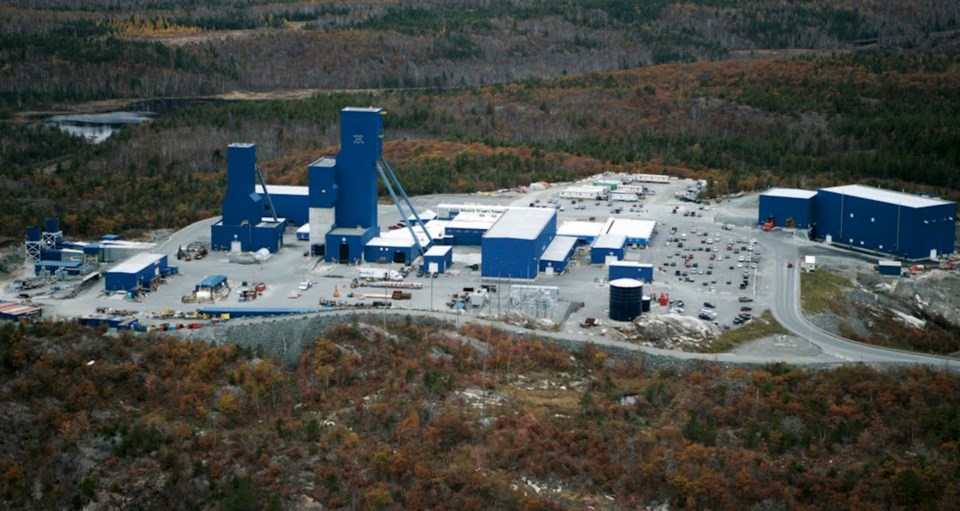Change and adaption are constants in any business.
Three senior mining executives, including the heads of Sudbury's two major mining companies, spoke at length at the Maintenance, Engineering and Mine Operators conference in Sudbury this week about how the industry is faring at a time when the demand for critical minerals is high and the availability of skilled labour is low.
Mining has always been one of Canada’s industrial cornerstones. Now with the global push to secure battery and high-tech metals, there’s a growing appreciation that the cleaner, greener, net zero global economy can’t be achieved without mineral extraction.
What’s being mined in the Sudbury basin is part of that burgeoning new circular economy that’s ending up in the battery materials that power the vehicles now going underground.
The industry today adheres to high safety and environmental standards, and is introducing new technologies all the time.
Virtual reality simulators are enhancing training from a hands-on aspect. Automation, sensor and remote technologies help remove front-line workers from the hazardous areas of the job. The introduction of underground battery electric vehicles has helped reduce greenhouse gas emissions and made the air cleaner where miners work.
Glencore’s Peter Xavier, vice-president of Sudbury Integrated Nickel Operations, said it’s an industry with a story that's worth telling. And the people involved have a real sense of purpose in their work. "We do it for a reason."
The upheaval of the pandemic prompted droves of workers to leave the workforce or be forced to change jobs. Like in any other business, it’s a competitive labour market. There are more openings to fill than there are people available to fill them.
Unless one grew up in a mining town with family ties, Xavier said, it remains very much a "niche business” to many in Canada. Working in a smelter requires specialized labour.
With each company doing its own thing on the recruiting front, Xavier suggested maybe the industry needs to work together on it.
Vale’s Gord Gilpin, head of its Ontario base metal mining operations, said there’s “no magic wand to wave” to fill the skilled ranks of those leaving and retiring.
Given this new reality, Vale has shifted its thinking by recruiting eager and driven young people, and creating its own internal training institutes.
In Vale’s Miner in Training entry-level program, individuals receive on-the-job training to pick up the skills to work underground. There’s an emphasis on diversity with women and Indigenous people given priority consideration.
“We know that diverse thinking leads to better decisions, not to mention it’s the right thing to do,” said Gilpin.
“We still need to diversify the mining industry,” said Josée Cyr, director of technical services for Agnico Eagle Mines in Québec. “We still have to show that it’s an amazing and exciting industry.”
People in large urban areas don’t see their “incredible” projects and technology deployed. This must be showcased to a greater audience, including the younger, “gamer” generation.
Each mining project requires a specific skill set, but there’s a wide range of opportunity for everyone to participate. The mining industry does offer good financial rewards, Cyr said, but it’s often heard that people want a new way of work and want to be part of something big that can make a difference for tomorrow.
Her entry into the mining field as a technician was born out of the curiosity of where her father was going and what he was doing each day.
“I realized each day there’s an interesting thing; each day there’s always a new challenge.”
Gilpin mentioned that one unexpected benefit of onboarding young people is that it’s given them valuable insight into what the next generation of miners is interested in doing and what’s what important to them. Protection of the environment, he said, is of particular importance.
Xavier added when one enters Sudbury — with its 10 operating mines, two smelters and a refinery — it doesn’t fit the stereotypical image of a heavy industrial town. That’s a “testament to the good work that’s been done.”
The industry has always had a connection to the environment and the community at large. And it's generally recognized that it’s part of industry’s responsibility today to mitigate the impact on the land.
“In a way, we try to be as invisible as possible. So here we are in Sudbury with some of the best air quality in the province.”
Xavier alluded to a big screen photo of Glencore’s Nickel Rim Mine in Sudbury, pointing out the care in the design of the operation’s layout to achieve a small footprint on the landscape, the standing joke being it takes up less space than a typical shopping mall.
At the same time, Xavier said more customers want a product sourced from an environmentally responsible company.
In talking about deploying new technology and pushing the pace of change, Gilpin stressed the importance of staying rooted in the fundamentals of safety, production and cost. The front-line workers have to have a level of comfort, and how a company operates must stay consistent.
Vale is proud of its new Integrated Remote Operations Centre (IROC), a control room that remotely monitors mining operations across the Sudbury Basin.
The facility generated some initial resistance from front-line workers, wondering if Big Brother was spying on them.
"What it comes down to is good old-fashioned communication," Gilpin said. But it’s also delivered a positive side benefit.
Sudbury mines have historically been seismically active. Vale has safety check-in processes and protocols during these instances. IROC has proved its worth in that the response time to account for workers’ safety “went up drastically.”
But as increasingly dependent as the industry is on technology, all remarked how it’s very much a people-centric business and how a company needs a team to build major projects.




